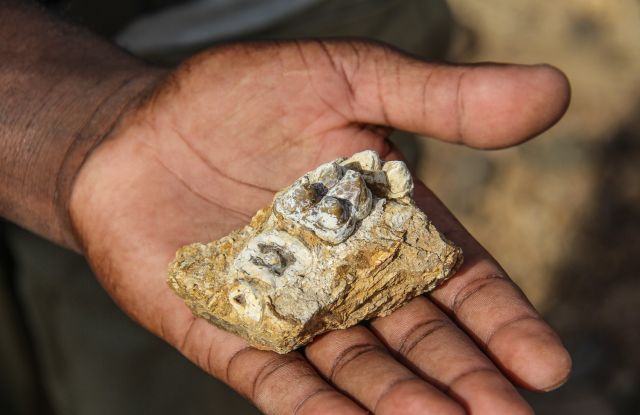

National Museums of Kenya
The National Museums of Kenya (NMK), established in 1910, is one of Africa's leading institutions for scholarship, research and outreach in paleontology, archeology, ethnography, botany, zoology, biodiversity, conservation and tropical medicine. Its mandate includes the management of all major museums, sites and monuments of the Republic of Kenya. It is the custodian of world's largest collection of early hominin fossils: close to 1'000 individuals illustrating the most complete record of human evolution going back 7 million years. The paleontological collection houses a further 200'000 vertebrate, invertebrate and plant fossil specimens representing different geological epochs of Earth as far back as 34 million years. The NMK supports a cadre of PhD-level Kenyan scholars and regularly hosts scientists and researchers from leading universities and research organisations throughout the world for collaborative projects.
Panorama 1 shows the inner courtyard of the Louis Leakey Memorial Building, National Museums of Kenya, Nairobi. The Building, named in honor of Louis Seymour Bazett Leakey (1903 – 1972), the world-famous British archeologist and naturalist who made key contributions to establishing Africa as the cradle of humankind, is home of the Department of Earth Sciences.
{bepiv}science/paleo/nmk/nmk-pano2.jpg|width=650|height=300|carousel=0{/bepiv}
Panorama 2 present a section of the Paleontological Laboratory in the Louis Leakey Memorial Building. Part of my work space is shown on the very right. The Laboratory features stacks upon stacks of boxes filled with fossil specimens going back millions of years as witnesses of the sometimes dramatic changes in Earth's environment.
{bepiv}science/paleo/nmk/nmk-pano1.jpg|width=650|height=300|carousel=0{/bepiv}
Panorama 3 overlooks several other research buildings. The Museum campus is an oasis of tranquility in the middle of one of Africa's most vibrant cities. The extensive grounds incorporate a botanical garden and several beautifully landscaped outdoor areas, making the Museum one of the premier corporate event venues in Nairobi.
{bepiv}science/paleo/nmk/nmk-pano3.jpg|width=650|height=300|carousel=0{/bepiv}
Panorama 4 shows the entrance to the Museum's herbarium, the largest botanical collection in tropical Africa with more than 700'000 plant specimens. Research focuses on the taxonomy, distribution, use and conservation of East African plants.
{bepiv}science/paleo/nmk/nmk-pano4.jpg|width=650|height=300|carousel=0{/bepiv}


